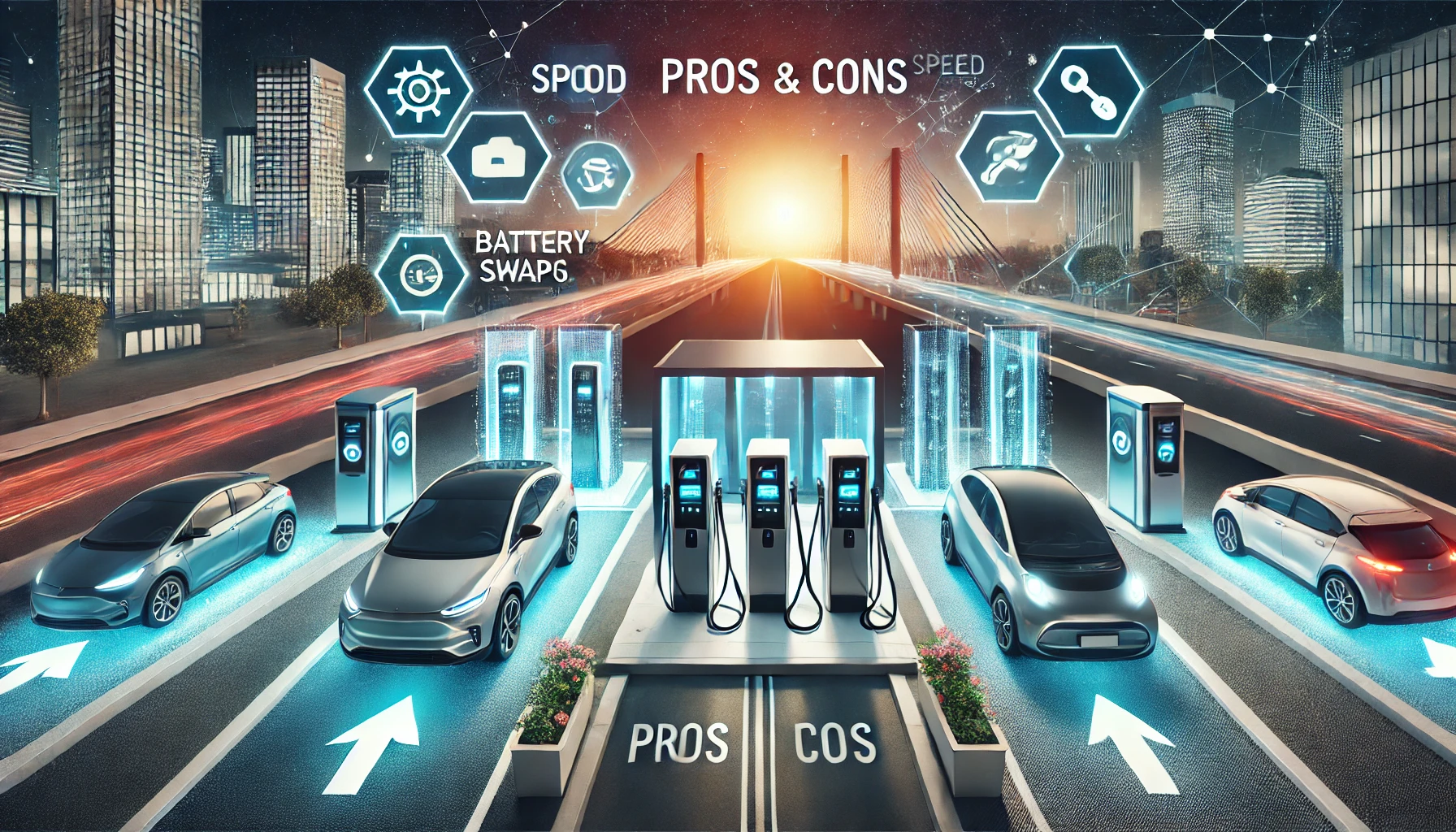Charging Stations or Battery Swaps? The Future of Electric Vehicle Infrastructure

The Great EV Debate: Charging Stations or Battery Swaps
In the ever-evolving world of electric vehicles (EVs), two competing infrastructures are vying for dominance: charging stations and battery swap stations. While both models promise to keep our EVs running, the question remains: which one will become the go-to solution for future EV owners? Let's dive into the pros and cons of each and take a look at the landscape from a practical, humorous perspective. Buckle up for this electrifying journey.
Charging Stations: The Slow and Steady Champion
Charging stations are the current standard, and they're as ubiquitous as Starbucks in some urban areas. The convenience of plugging your car in, similar to your phone, makes them the comfortable, tried-and-true option. But let's be honest – the waiting time can be brutal. Fast chargers are better than the slow home chargers, but unless you're driving a Tesla with their Supercharger magic, you'll be browsing cat videos for a while. Pros? You don't need to swap anything or touch those giant battery packs. You just plug in, stretch your legs, and maybe grab a latte. Cons? That latte can turn into an entire meal depending on how long your car needs. For road trips, especially, waiting at a charger can feel like watching paint dry, except the paint is your empty battery.
Battery Swaps: The Quick-Fix Solution
Now imagine this – you pull into a station, and instead of waiting for your car to charge, you swap out the drained battery for a fully charged one. Bam, you’re back on the road in a few minutes. Battery swap stations seem like the ultimate fast-food version of EV charging – quick, efficient, and almost too good to be true. But here’s the catch: it requires standardized battery sizes. Right now, the EV market is about as diverse as a candy aisle, with each car model having its own battery configuration. Getting manufacturers to agree on a single standard could be a bigger challenge than deciding on the best pizza topping. The pros? Super fast and you’re not stuck waiting. The cons? The infrastructure cost is high, and there’s the issue of who actually owns that swappable battery. Plus, are you really going to trust a stranger's battery with your precious car?
The Environmental Impact: Which Model Is Greener
Let’s talk eco-friendliness. Charging stations, particularly those using renewable energy, seem to have the upper hand. Solar-powered charging stations already exist, which means your EV could essentially run on sunshine. Battery swap stations, however, require more batteries in circulation, leading to questions about battery production and recycling. Are we creating more waste for the sake of convenience? On the flip side, battery swaps could enable a circular economy where batteries get properly maintained, reused, and recycled more efficiently. It's a bit of a toss-up, depending on how future systems are implemented.
Infrastructure and Cost: A Battle of the Titans
Here’s the million-dollar question – or should we say the multi-billion-dollar one: which infrastructure is more viable on a large scale? Charging stations have the benefit of a head start. Companies like ChargePoint and Tesla are already building vast networks, making it easier for EV owners to find a charger on the go. The downside? They require substantial power grids and can stress local energy supplies, especially during peak times. Battery swaps, on the other hand, are less common and need an entirely different type of infrastructure. Building these swap stations from scratch would cost a fortune, but once established, they could potentially reduce the strain on the energy grid by balancing supply and demand. Both models have their costs and benefits, but will consumers be willing to embrace one over the other?
What Does the Future Hold for EV Owners?
So, which model will become the norm? Charging stations might win in the short term simply because they’re already here and expanding. Battery swaps, however, could become a niche solution for fleet vehicles or urban areas where speed is essential. As EV technology evolves, we may even see a hybrid model emerge where both options coexist – charging stations for daily use and battery swaps for long-haul drivers or fleets. Ultimately, it might come down to what EV owners prioritize: convenience, speed, or eco-friendliness.
The Final Lap: What Do You Think?
The EV world is buzzing with possibilities, but the future of electric vehicle infrastructure is still up in the air. Will we stick to charging stations and embrace the slow and steady approach, or will battery swap stations revolutionize how we power our cars? What would you prefer – waiting at a charging station or swapping batteries on the fly? Let us know your thoughts and join the conversation. After all, the future of EVs is in your hands.



